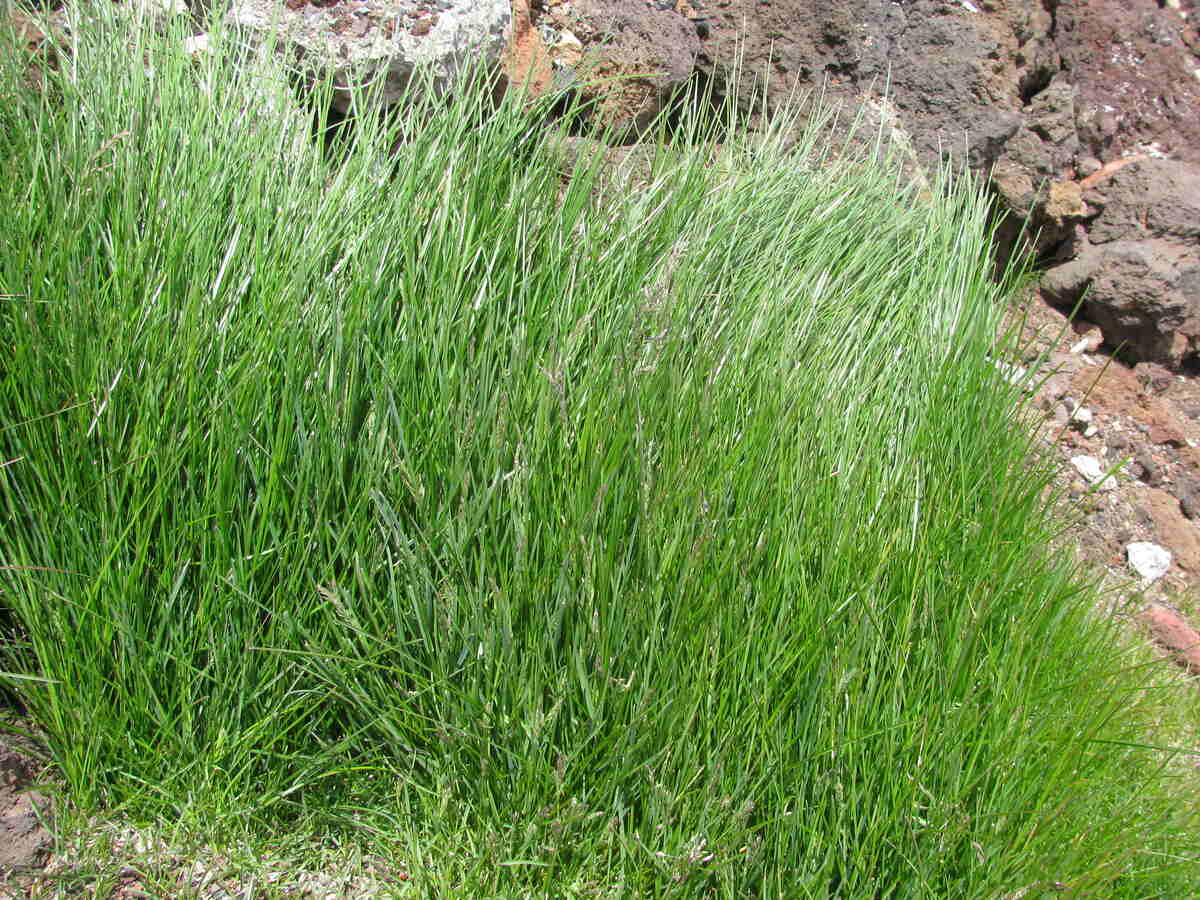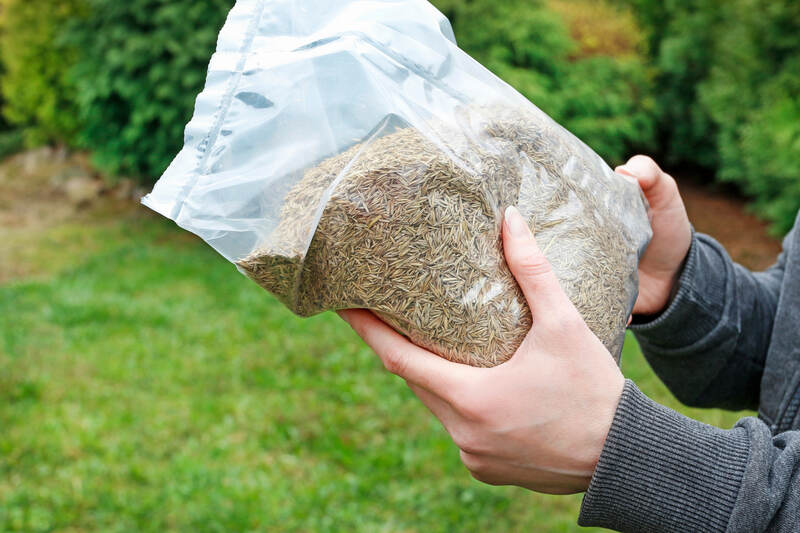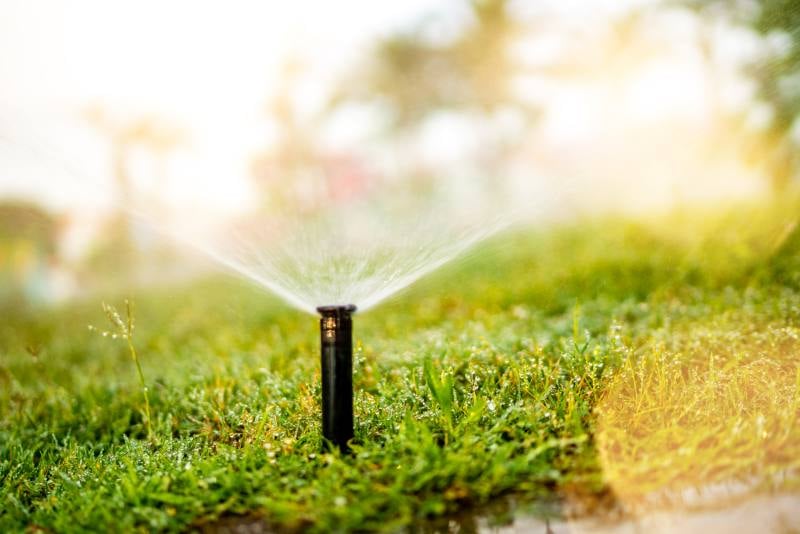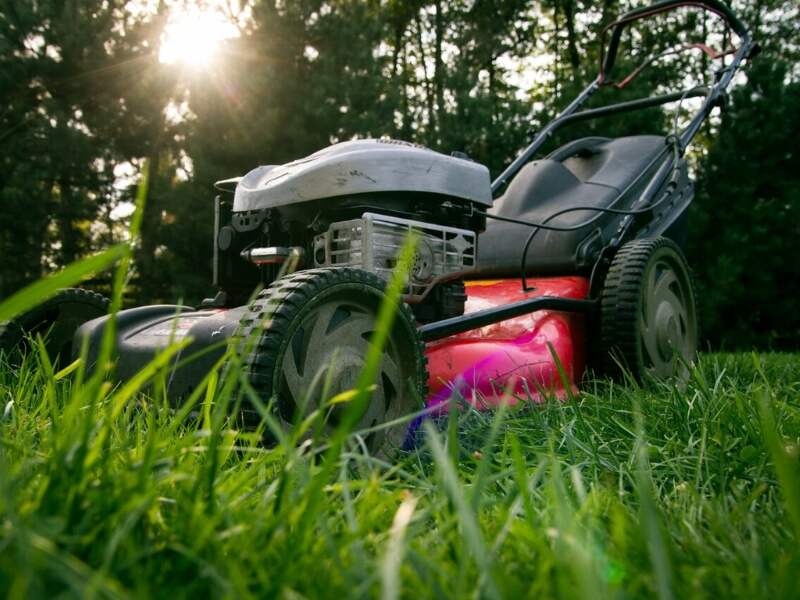
The grass is always greener on the other side, or so the saying goes. But all that can change, and you can have the greenest grass in the neighborhood by following the information in our guide to growing Kentucky bluegrass. Called KBG for short, this is already one of the most attractive turfgrasses, and it shines even brighter with proper planting and maintenance.
Soon, your neighbors will envy your thick, lush, emerald-green Kentucky bluegrass lawn, and the grass will be greener on your side of the fence!
Kentucky Bluegrass at a Glance
- Classification: Cool-season grass
- Spreads by: Rhizomes
- Soil type: Fertile, well-draining
- Soil pH: 6-7
- Mowing height: 2 to 3 inches
- Shade tolerance: Low to moderate
- Drought resistance: Moderate
- Foot traffic tolerance: Low to moderate, but recovers quickly
- Maintenance needs: High
- Potential for disease: Moderate to high
- Insect pest tolerance: Moderate, but varies by cultivar
Other notes: Produces a dense lawn under ideal conditions; shade tolerance, drought resistance, etc. vary widely by cultivar; newer cultivars are generally hardier, more resistant to disease, etc.; mow taller in summer; typically mixed with other grasses in home lawns
The Basics Of Kentucky Bluegrass

Kentucky bluegrass (Poa pratensis) is revered as a premier lawn grass across most of the United States. This thick, dense grass comes back year after year, giving you a gorgeous rich emerald to blue-green lawn that is soft and comfortable on bare feet.
Commonly known as KBG, it has the greatest cold tolerance of all the widely grown cool-season turfgrass species. Similar to other cool-season grasses grown in northern climates, growth slows during the summer months, and the grass may go dormant during extreme heat or extended drought. However, it quickly returns to its normal color with irrigation and the onset of cooler temperatures.
Kentucky bluegrass thrives in full sun yet still grows in partial shade, albeit not as thickly. It recovers quickly from foot traffic, and bare or damaged spots fill in quickly, but a shorter root system means it’s only moderately capable of staying green through a drought.
However, keeping your Kentucky bluegrass a beautiful deep, dark green color will take more lawn maintenance and patience than other cool-season lawns. You can’t forget to water, fertilize, and mow!
Kentucky Bluegrass Varieties
More than 200 varieties of KBG are available worldwide! Kentucky bluegrasses are grouped into three general categories:
- Elite turf types
- BVMG (‘Baron,’ ‘Victa,’ ‘Merit,’ & ‘Gnoma’) turf types
- Common types
Classifications of the turf-type Kentucky bluegrasses (Categories I and II) include Aggressive, Bellevue, Compact, Compact America, Compact-Midnight, Julia, Mid-Atlantic, and Shamrock types.
For more information on the different classifications and varieties, the University of Tennessee Cooperative Extension has a great resource.
Pros and Cons of Growing a Kentucky Bluegrass Lawn

KBG makes an excellent turf, but you have to be willing to work for it. See why this coveted grass type may or may not be for you.
Pros of Growing KBG
✓ Fine texture is soft underfoot
✓ Attractive emerald green color
✓ Tender blades cut cleanly for a pristine appearance
✓ Best cold tolerance of cool-season grasses
✓ Good disease tolerance when managed properly
✓ Goes dormant during droughts instead of dying
✓ Many cultivars to choose from, with a range of growing requirements
✓ Aggressive rhizomes help the turf recover from wear and tear
✓ Starts well from seed or sod
Cons of Growing KBG
✗ High water requirement
✗ Shallow root system
✗ Low shade tolerance
✗ Doesn’t withstand high foot traffic
✗ Prone to thatch, disease, and insects
Understanding Cool-Season Grasses
Before we get into the specifics of Kentucky bluegrass, let’s talk about the basics of cool-season grasses.
Turf-type grasses are classified as either cool-season or warm-season grasses based on how they grow and the climate(s) they prefer. Kentucky bluegrass is one of the most popular cool-season grasses.
Cool-season grasses have adapted to colder temperatures and grow across the northern United States and parts of the transition zone. They start growing in early to mid-spring when temperatures are above freezing (40 to 42°F) and grow until October or November when they go dormant to survive winter temps and being buried under snow.
They grow the most in the spring and late fall when soil and air temperatures are 65 to 75°F. They (typically) do well when temperatures are milder in July and August, but in extreme heat, they need more water to stay green. Some cool-season grasses go dormant when it gets too hot and perk back up when temperatures cool again.
How Do You Establish Kentucky Bluegrass?

Kentucky bluegrass is fantastic because it’s pretty easy to start a new lawn with either seed or sod. Truthfully, you could also buy plugs and start a lawn that way, but it’s highly uncommon. Depending on which is better for you, you’re better off going with one of the other two methods.
The Nitty Gritty of Seed vs. Sod
- Planting seed is the cheaper route, but it takes longer than sod to get an established lawn.
- Laying sod creates an (almost) instantaneous lawn, but installation is expensive and labor-intensive.
- Sowing seed has a more limited timeframe, but sod installation is more flexible.
The Cost Of Starting A KBG Lawn
Seed: Kentucky bluegrass seed costs about $5 to $6 per pound. You’ll need 3-4 pounds per 1,000 square feet to seed a new lawn and about 2 pounds per 1,000 square feet to overseed an existing lawn.
- Grass Seed Options:
– Jonathan Green (11970) Blue Panther Kentucky Bluegrass Grass Seed (3 lbs.)
– SeedRanch Midnight Kentucky Bluegrass Seed (5 lbs.)
– Jacklin Seed – Biltmore Blue Blend – 100% Kentucky Bluegrass (5 lbs.)
Sod: KBG sod costs about $0.65 per square foot.
When To Start Kentucky Bluegrass
As I said before, when you’re sowing seed, the optimal timeframe is narrower than putting down sod.
Seed: Realistically, you can throw seeds down whenever you want. But chances are, when it’s 90°F out, your lawn will struggle to get going. To have the best chance at success, you want to get seed down just before your KGB goes into the part of the growing season where it naturally grows the most. As a cool-season grass (as mentioned above), Kentucky bluegrass grows the most in the spring and fall. Because of this, the best time to plant a new lawn is in early fall.
In Northern areas, this is in mid-August to mid-September. If you’re in the transition zone, sow seed from mid-September to early or mid-October.
Sod: KBG sod, on the other hand, can be laid whenever you have the time and motivation to tackle the project. However! Remember that this grass will go dormant in the summer if it’s too hot. You will significantly increase your success if you lay sod when temps are more moderate in the spring or fall.
Planting A Monoculture vs. Mixed Grass Lawn
Let’s touch on planting 100% Kentucky bluegrass or a blend of KBG and another grass seed.
Across much of the North and the transition zone areas where homeowners are growing cool-season grasses, most people (and professional landscapers) prefer to grow a mix of two or more different grasses. For instance, in Idaho, where the winters can be frigid but summers are hot and dry, an 80:20 or 90:10 blend of KBG and perennial ryegrass is the standard.
Straight KBG lawns are a rarity because of their fussiness and high-maintenance needs.
Growing a mix of grasses gives you greater genetic diversity and can create a lower-maintenance turf. Your lawn is better able to grow in mixed conditions. It will be stronger, better adapted to withstand summer heat or shade, and have better defenses against disease.
How to Care For An Established Kentucky Bluegrass Lawn

I’ve hinted that Kentucky bluegrass can be a bit of a diva in terms of maintenance. Now, you’ll see what that’s all about. These tips will help you keep your KBG lawn as healthy and vibrant as possible.
Keep Your Kentucky Bluegrass Well-Watered
Without a doubt, Kentucky bluegrass guzzles more water than most other grasses. During the cooler spring and fall, expect to give your grass at least 1 inch of water per week.
When temperatures skyrocket in July and August, you can either let your lawn go dormant and turn a nice shade of brown from drought stress or give it 2” of water weekly to keep it green.
No matter the temps and time of year, water your lawn in the early morning hours. Before 10 a.m. is ideal. It’s also best to water it 2-3 times a week, giving it a “long” drink each time instead of watering it every day with less water.
You’ve likely seen this recommendation before. It’s known as deep but infrequent watering. It helps to encourage the grass roots to grow deeper in search of water. The roots will grow stronger and be better at handling periods of drought.
Fertilize Regularly to Keep it Looking Good
How much you fertilize your lawn is another choice only you can make, similar to whether you water it all summer or let it go dormant. There’s no denying that Kentucky bluegrass will look better with more fertilizer, but you can dial back the applications if looks aren’t your main goal.
Applying between 1 and 5 pounds of nitrogen (N) fertilizer per 1,000 square feet of lawn yearly is recommended. The higher values will give you the magazine quality KBG, and the lower amount of nitrogen will hit the minimum the grass needs to grow.
Remember, run a soil test every couple of years to get the best fertilizer recommendations.
Aim to apply most of this from late summer through fall to help your lawn recover from heat stress, boost its color, and strengthen the grass for winter dormancy. Break the total nitrogen into two to four applications depending on how much you’re applying.
You can fertilize in spring if you want, but you must do so carefully. Wait until the grass is completely green, then give it a dose of slow-release fertilizer. If you fertilize too early, meaning too soon after it comes out of dormancy, you’ll make it grow too fast and deplete all the stored carbohydrates. Your grass will weaken and become more susceptible to stressors like drought and insects.
Need help choosing a fertilizer? Check out our guide on How to Choose the Right Lawn Fertilizer.
Mow Your Grass on the Taller Side

It’s also important to keep your KBG slightly taller when you mow. The taller the grass blades, the deeper you’ll encourage the roots to go into the soil, as shoot height is proportional to rooting depth. Shorter grass = shorter roots, and vice versa. A good mowing height for this grass is 2 to 3 inches tall.
Never take off more than one-third of the grass’s height with the lawn mower, and leave the mulched grass clippings on the lawn to add nitrogen back into the soil for an added dose of fertilizer.
Note: Check out our article containing the best mowing tips if you need to brush up on your grass-cutting skills.
Minimizing Thatch and Soil Compaction
Excessive thatch is a regular problem in KBG lawns, unfortunately. The thatch builds up quickly because of regular fertilization, creeping rhizomes, and quick, lush growth. It becomes problematic because the organic material lays undigested on the soil surface and keeps water and air from moving into the soil and reaching the roots. Thatch also encourages insects and disease problems.
Plan to dethatch your lawn yearly in either April or September when the lawn is actively growing. Never do it during the summer when it’s gone dormant because of the heat.
You must also watch for soil compaction and aerate the lawn as needed.
As you run the mower across the grass, walk across your property, and let pets and kids romp, the soil naturally compacts from the weight. The free space between the soil particles is squeezed out when it compresses. Water, oxygen, and nutrients from fertilizer can’t move through the soil and get to the roots.
Core aeration removes plugs of soil from the yard, opening up this compaction to improve permeability. Heavier soils can be aerated yearly—it’s best to do this in spring or fall, too—and lighter soils can go 2-3 years.
Dealing with Weeds
Weeding is the bane of existence for many homeowners, especially if you live near city parks or fields where the weeds aren’t always controlled. But! I have good news for all you weed-haters. The cultural practices you perform regularly for a healthy lawn can also help with weed control.
Case in point: many weeds love compacted soils. How do you solve this? Keep your lawn aerated to break up soil compaction; you’ll see fewer weeds. (As a caveat, I’ll also add that aerating will bring weed seeds to the surface, so you might want to put down a pre-emergent herbicide following aeration.)
Other examples:
- Thin spots in your turf let sunlight penetrate the grass canopy and encourage crabgrass and other weed seeds to germinate. Overseeding in the fall keeps your grass thick and stops light penetration.
- Mowing high helps shade the soil surface, discouraging weed seeds from sprouting.
- Frequent mowing knocks the tops off any weeds that come up, keeping them from setting flowers and going to seed. Fewer seeds mean the generational curse of weeds slows down.
If you are having problems with weeds, I highly recommend using a pre-emergent herbicide in the spring to prevent annual weeds and then spot-treat as needed. Three years ago, almost 75% of my lawn was dandelions. I started using a high-quality pre-emergent just as the grass comes out of dormancy in spring, and I might have a dozen dandelions growing in my backyard right now.
Insect and Disease Concerns
I’d like to say that insect and disease problems are few and far between, but alas, that isn’t the case. Kentucky bluegrass creates a thick, dense turf. Adding 1-2” of water every week makes a warm, humid environment perfect for problems.
To prevent unexpected issues from becoming big problems, regularly scout your lawn and quickly begin treatment when you spot any signs of pests or diseases.
Common insects include:
- Grubs
- Bluegrass billbugs
- Sod webworms
- Greenbugs
- Chinch bugs
- Armyworms
Kentucky bluegrass can be susceptible to the following lawn diseases:
- Necrotic ring spot
- Summer patch
- Dollar spot
- Leaf spot
- Snow molds
- Fairy rings
- Red thread
- Rust
- Powdery mildew
When it comes to diseases, prevention goes a long way. Avoid excess thatch, aerate compacted soils so water doesn’t sit on the soil surface, and don’t overapply nitrogen.
Another great way to minimize disease is to plant your yard in a mix of KBG and other cool-season grasses like tall fescue or perennial ryegrass. They have better disease resistance, and if something does try to wipe out your lawn, the entire thing won’t be affected.
FAQ About Kentucky Bluegrass
Kentucky bluegrass isn’t necessarily hard to grow, but you must do a lot of work to get a prize-winning lawn. You’ll be consistently watering, mowing, and fertilizing.
Kentucky bluegrass does best when grown in full sun. It needs at least 6 to 8 hours of direct sunlight daily but prefers as much as possible. Some varieties will grow in partial shade, but the turf might not be as thick.
Kentucky bluegrass forms a dense sod because it spreads via rhizomes. This thick growth means it can crowd out weaker grasses over time.
Your lawn will benefit from periodically overseeding Kentucky bluegrass, especially if you see thin spots or bare patches. Seeding in the early fall is best; sow seed at least 60 days ahead of the first expected fall frost.
Get Help with Lawn Care
Kentucky bluegrass is a stunning turf choice. If you think this grass is a good choice for your yard, contact a local lawn care professional through LawnStarter today. They can help you choose the best variety and install and care for your grass, giving you a gorgeous lawn while freeing up your time to do the things you love.
Main Photo Credit: Forest and Kim Starr / Flickr / CC BY 2.0
LawnStarter participates in the Amazon Services LLC Associates Program, an affiliate advertising program. LawnStarter may earn revenue from products promoted in this article.